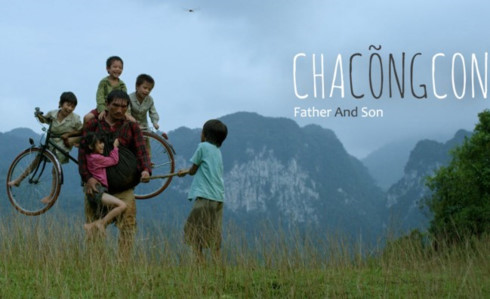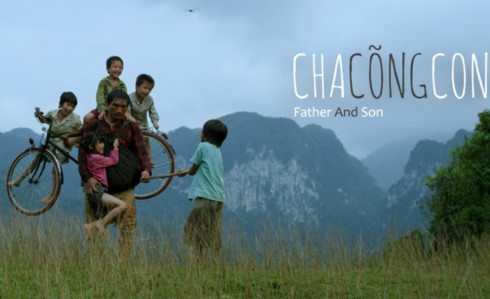
The film Cha cong con (Father and Son) has beaten out two other nominees to attempt to represent Vietnamese cinema at the 2018 Oscars and is being submitted to the award ceremony’s qualifying round.

The director Luong Dinh Dung said he is filled with happiness
and hopes his film will serve its mission well.
"We are planning a number of screenings for
local audiences at schools and cinemas,” Dung said adding that he will continue
making more art films.
Cha cong con was adapted from a short story
of the same name written by Dung in 1995.
The main character in the movie is a little
boy named Ca. He lives with his blind father, who has spent his entire life by
the river. Ca’s world revolves around the river and everything associated with
it.
Ca dreams of touching the clouds and of
visiting the fairy tale lands described by his father. However, the boy suffers
from an incurable disease and cannot wait for the day his father has enough
money to take him to the doctor.
The
film won the Best Cinematography award at the 17th Milano International Film
Festival, Best Foreign Feature and Special Jury Award for Outstanding
Cinematography at the 26th Arizona International Film Festival, and Indie
Spirit Best Storyline award at the 15th Boston International Film Festival.
Source: VOV
With an increasingly vibrant and widespread emulation movement aimed at building cultured residential areas and cultured families, Yen Thuy District has been making steady progress toward improving both the material and spiritual well-being of its people, while fostering a civilized, prosperous, beautiful, and progressive community.
Once lacking recreational spaces and community facilities, Residential Group 2 in Quynh Lam Ward (Hoa Binh City) has recently received attention for the construction of a new, spacious, and fully equipped cultural house. The project followed the model of state support combined with public contributions in both labor and funding.
The "All people unite to build cultural life" movement, which has been effectively integrated with Kim Boi district’s socio-economic development goals, is fostering a lively spirit of emulation across local residential areas, hamlets, villages, public agencies, and enterprises. In addition, through the initiative, traditional cultural values are being preserved and promoted, while community solidarity and mutual support in poverty reduction and economic development are being strengthened.
A working delegation of the Hoa Binh provincial People’s Committee led by its Permanent Vice Chairman Nguyen Van Toan on June 11 inspected the progress of a project to build the Mo Muong Cultural Heritage Conservation Space linked to tourism services in Hop Phong commune, Cao Phong district.
Born and growing in the heroic land of Muong Dong, Dinh Thi Kieu Dung, a resident in Bo town of Kim Boi district, in her childhood was nurtured by the sweet lullabies of her grandmother and mother. These melodies deeply imprinted on her soul, becoming an inseparable part of her love for her ethnic group's culture. For over 20 years, this love for her hometown has driven Dung to research, collect, and pass down the cultural values of the Muong people to future generations.
In the final days of May, the Ethnic Art Troupe of Hoa Binh Province organized performances to serve the people in remote, mountainous, and particularly disadvantaged areas within the province. These were not just ordinary artistic shows, but they were the meaningful journeys aimed at spreading cultural values, enhancing the spiritual life of the people and contributing to the preservation of ethnic minority cultural identities.



